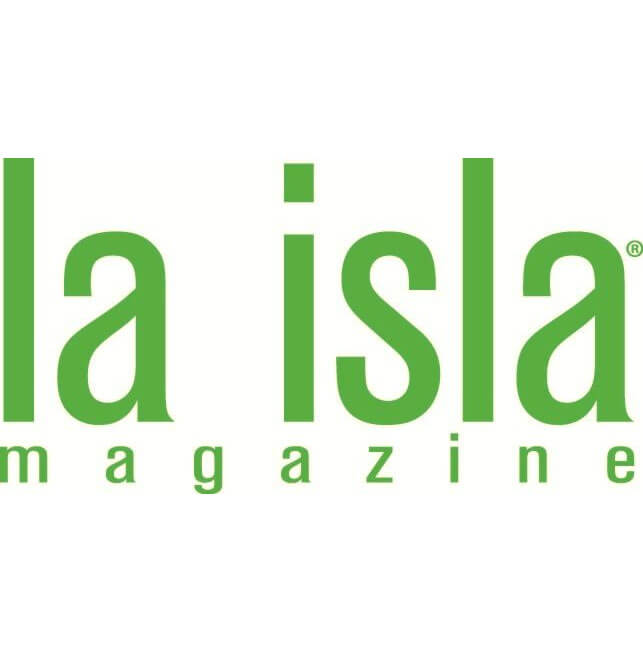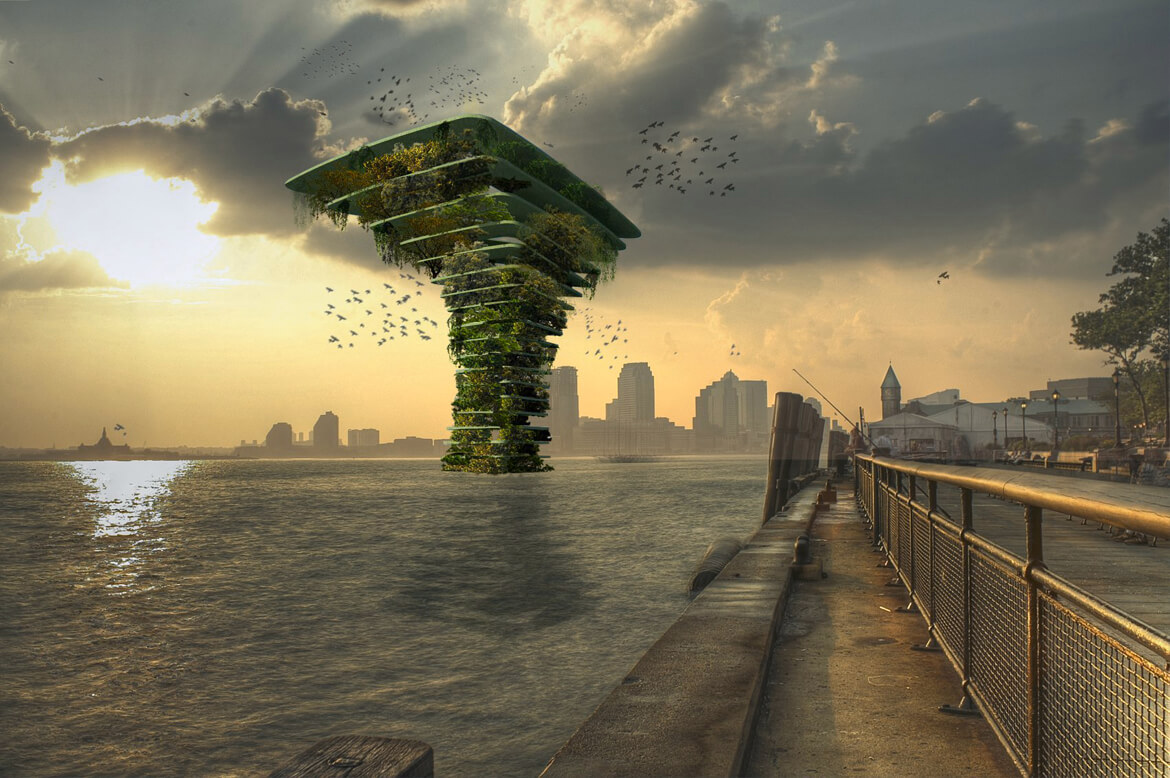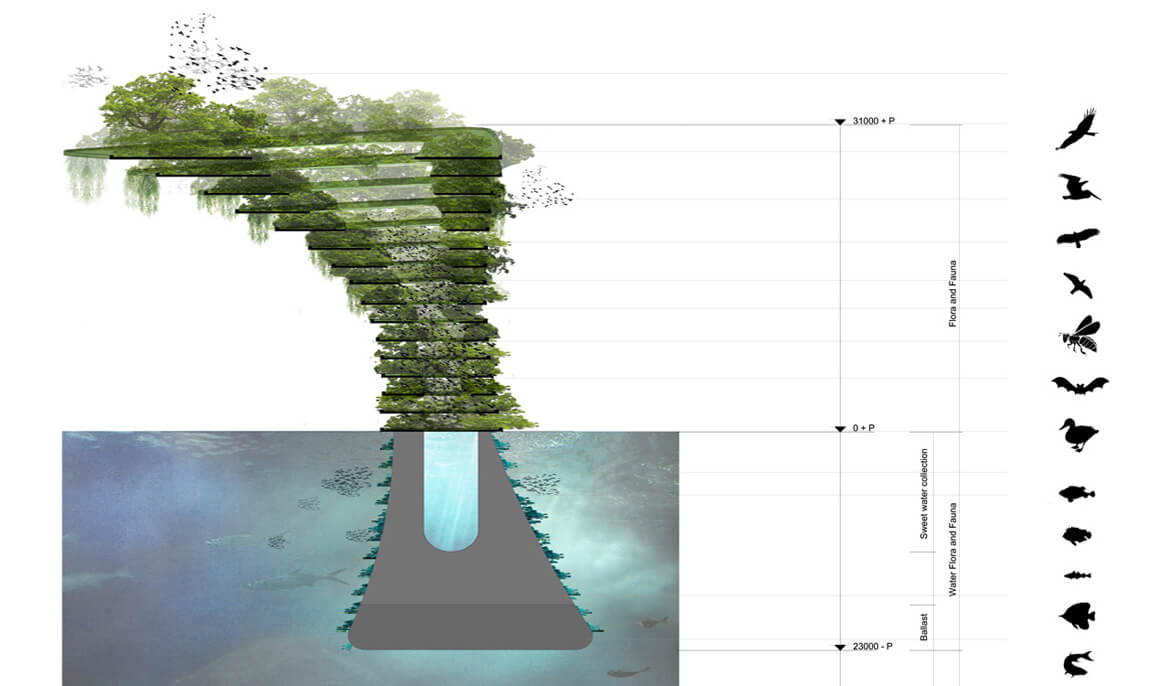
Water Architecture: A chat with Waterstudio and Koen Olthuis
By Enrique Sánchez-Rivera
La Isla
We were intensely captivated by Waterstudio after seeing them featured on National Geographic Magazine. Their incredible innovation skills and clear understanding about the future of architecture and our planet was obvious and ever so present in all of their plans and their current work. From a partially submersed ecological tower to floating islands in the shape of stars, Koen Olthuis and his team are shaping up the future for a post-antarctic ice meltdown era.
1. Can you tell us how Waterstudio got started and why?
When I was a young architect, I became fascinated by the structure of the Dutch landscape with its water and land. At that time, living on water was still limited to the well-known traditional houseboats. After two years of combined land and water projects, I started up Waterstudio, the first architecture firm in the world exclusively dedicated to living on water. I was a pioneer in a new market. To bring the market to maturity, the main focus
was to change the perception of the general public. Waterstudio began with an ambitious plan to develop innovative concepts in both technological and urban design fields. My conviction that living on water is essentially no different from living on land, just with a different foundation technique, spurred me on to develop types of housing with greater density and higher quality than the usual houseboats in a recreational countryside setting.
2. If you could define what you do in a sentence, what would it be?
We bring Architecture beyond the waterfront, creating new floating possibilities for growing cities World wide. And to add a second sentence: we have a lot of fun!
3. Where do you find inspiration for your designs? Floating structures and underwater urban environments are incredibly new to us so we are curious to know this.
I see architecture as products, since floating buildings are not fixed, their context can change and they are more or less independent from their environment.
May of our ideas are based on shapes and products from nature. I like architecure that looks simple and recognizable. So for instance the starfish design for the greenstar hotel in the Maldives is a design that every child can redraw ones they have seen it. I call this readable architecture.
4. How expensive do you think it will be to live on a floating structure vs. a land structure?
The price of a building on a floating foundation is comparable to a house on a fixed foundation, the exact price depends on the type of water, deep, shallow, waves, calm water etc.. , Making a floating building for calm water on a lake with less height difference is cheaper to construct than a building in the middle of the ocean.
One of the benefits of construction a floating building is that they don’t have to be constructed on their final location because you can move them afterwards. They can be constructed in a factory, weather doesn’t influence the building process, this makes it faster, easier and cheaper. Nowadays contractors are not used to constructing a floating foundation, when this type of foundation will be more standardized in future the construction of it will be even more cheaper.
5. How did the idea of the sea tree come along? Can you tell us about it? When will it be completed?
This is my favourite project.Our inspiration in regards to creating Sea Tree came from a project in Holland where ecologists challenged us to design a habitat for fauna which could not be disturbed by human beings. Water is, of course, a perfect way to keep people away. Other sources of inspiration were the shapes of floating oil storage structures in Norway and the shapes of land trees with a large crowns. Lastly, the concept was developed from park zones in urban areas. We divided these areas into sections and placed them vertically on top of each other. In the end, it has become a vertical hangout for wildlife! We are now in the middle of negotiations with an oil company to see if they will be the sponsor for the project. It will be a green advertisement of their outstanding offshore technology. They could show that from their knowledge also animals and local habitats could benefit. The sea tree will be built in an protected nursery and afterwards shipped out to its location on water in a city. This would bring an instant green upgrade!
6. Do you see yourselves also designing underwater environments at some point? Does that concept also align with your vision?
We already do this. We have a client in Curacao who wants an underwater room. So for him we design a projects in which we have windows under water. In that project we also design the shape of the floating body underwater so that coral and fishes can start use this structures for shelter and basis.
7. Obviously we like the idea of floating-everything, after all, we make bikinis! Which of your buildings or projects do you think would be best suited for a bikini fashion show?!
That should be our floating islands for the Maldives called Amillarah. The girls will enter the show via a small submarine through a hole in the ground of the island and then use the fantastic white artificial beach with real sand and palmtree as a catwalk while the audience gather around the islands on their yachts.

